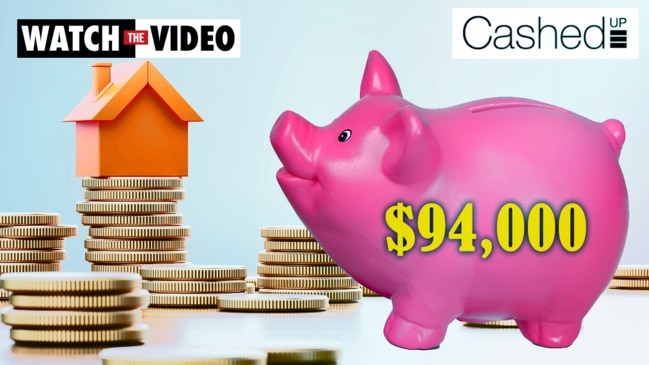Simple way to save $13,588 in tax per year with debt recycling
Most Aussies have debt and there’s a clever way to use that debt to save thousands in tax each year - you just need to know how.

In the current cost of living crisis, every dollar counts. If you want to get ahead, there is a limit to how much you can cut back on spending, and the reality for most people today is that they reached that point a long time ago.
That means that if you want to get ahead, you need to look at other ways you can get more money out of what you have today – and what you can do to make progress without just sacrificing more.
Enter debt recycling.
What is debt recycling?
This is one of my favourite strategies for homeowners with non tax deductible home loan debt, and allows you to effectively convert this debt into tax deductible investment debt.
As at the end of 2023, the Australian Bureau of Statistics (ABS) shows the average owner-occupier mortgage size is $584,907, and the current average variable mortgage interest rate is 7.26 per cent.
This means that if you have an average mortgage size sitting at the average variable mortgage interest rate, using debt recycling to make this mortgage debt tax deductible would generate you annual tax deductions of $42,464. In turn this creates tens of thousands of dollars in tax savings, all extra dollars you can use to get ahead (or spend on your today).

With a debt recycling strategy, you make extra payments on your non tax deductible home loan debt, and at the same time draw the exact same amount of money from debt. This money is then used to invest (typically into shares or ETFs) and because the purpose of this new borrowing is to invest, the interest on this portion of the debt becomes tax deductible.
When you follow a debt recycling strategy over time, your non-deductible home loan debt is ‘converted’ into tax deductible investment debt. In this example, you have a home mortgage at the average mortgage size of $584,907 against a property value of $1 million, and have a spare $500 per week you want to use to save/invest/get ahead.
How debt recycling works in practice
In week one of the strategy, you pay $500 as an extra payment on your mortgage. At the same time you would withdraw the same $500 amount from the new loan set up for investment purposes and invest this money into a share portfolio.
Note: because this strategy revolves around paying down non-tax deductible mortgage debt, it’s really only viable for people that have a mortgage against their home or another property that’s not an investment.
In the table below I’ve built on our previous example to show the interest deductions you can create and the potential tax you can save. For the example below I’ve used a marginal tax rate of 32 per cent, which is the tax rate you pay if your annual taxable income is above $45,000 after the upcoming July tax cuts.
You can see from this that the tax savings over the long term are significant, coming in at $13,588 every single year. That’s an extra $13,000 you get for just paying down your mortgage and investing money, two things that you wanted to do anyway. This money can be used to invest more and get ahead faster, or just spend today.
Another benefit of this strategy comes from the fact the long term return on shares (9.8 per cent) is higher than long term average mortgage interest rates. As a result, your share portfolio will grow at a faster rate than the interest you pay on your investment debt. Eventually when you down your shares, you should have enough money to clear your investment debt and have money leftover.

If you’re considering using debt recycling as a strategy, you should note there are a few different ways to structure your mortgage debt, some of them better than others. Given the value in getting this strategy right along with the complexity of actually executing on the strategy, my strong suggestion is that you get some good advice.
Ideally you should put in place a solid financial plan, but at the very least the support of an experienced mortgage broker that knows their stuff when it comes to this specific strategy. Getting this wrong can be seriously costly, not to mention frustrating, so a bit of time and some money will be well worth it to get you the best results.
If you’re investing and have a mortgage, you could choose to invest the money directly into your investment account, i.e. not through a debt facility as part of a debt recycling strategy, and not get the tax deductions. Or you could choose to do exactly the same investing, structured in a smarter way, and cut your tax bill in the process.
There are very few ‘no-brainers’ when it comes to your money, but if you’re a homeowner looking to both pay down your mortgage and invest, this is one of them.
Is debt recycling risky?
Any time you borrow money to invest there are risks you need to carefully consider and manage, but one of the best things about debt recycling is that your total debt levels do not increase at any point. This is because you’re consistently reducing one type of debt while you increase another, with your total debt levels unchanged. This goes a long way to reducing your risk levels.
Another important thing to mention if you’re considering using debt recycling is the importance of choosing good investments with the money you’re drawing out of your ‘recycled’ debt. If you choose average or bad investments the benefits of this strategy will be significantly reduced. Refer back to the earlier chapter on investing if you need a refresher on how to choose rock solid investments.
The wrap
Getting ahead isn’t easy, if it was, we’d all be rich already. Particularly today with the cost of living, interest rates, wage growth, and the rest, it’s not getting any easier. That means if you want to actually get ahead, you have to use the rules to your advantage.
Debt recycling is a strategy that gets your money working smarter and harder, and can deliver some serious upside – if you take the right approach.
Ben Nash is a personal finance and investing expert commentator, financial adviser and founder of Pivot Wealth | Instagram | Facebook | Podcast
Ben is also the author of Replace your salary by investing and Get unstuck, he runs regular free online money education events, check out all the details and book your place here.
Disclaimer: The information contained in this article is general in nature and does not take into account your personal objectives, financial situation or needs. Therefore, you should consider whether the information is appropriate to your circumstances before acting on it, and where appropriate, seek professional advice from a finance professional.




